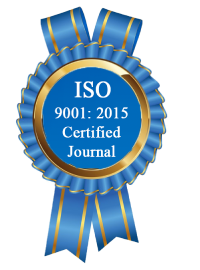| All | Since 2020 | |
| Citation | 172 | 110 |
| h-index | 7 | 5 |
| i10-index | 1 | 0 |
WJERT Citation 
Login
News & Updation
Abstract
OPTICAL PHENOMENON_ELECTRO-OPTICAL PHENOMENON (OP_[E-OP])-TRANSITION, OBSERVED IN n(p)-TYPE DEGENERATE “COMPENSATED” InP(1-x) [As(x), Sb(x)]-CRYSTALLINE ALLOYS (9)
Huynh Van Cong*, Serge Dumont, Paul Blaise, Robert Brouzet, Vincent L’Henaff, Michel Cayrol, and Nadia Tahri-Roe
ABSTRACT
In - crystalline alloys, , various optical, electrical and thermoelectric laws, relations, and coefficients, being enhanced by: our static dielectric constant law given in Equations (1a, 1b), accurate Fermi energy given in Eq. (11), and finally optical-and-electrical conductivity model, determined at the optical phenomenon and electro-optical phenomenon (OP [E-OP])-transition, and given in Eq. (20a), are now investigated, by basing on the same physical model and mathematical treatment method, as those used in our recent works[1, 2, 3], noting that, for x=0, these obtained numerical results are reduced to those given in the n(p)-typedegenerate InP-crystal.[4,5] In the following, for given physical conditions, all the optical coefficients are expressed as functions of the effective photon energy : , E and , being the photon energy and the optical band gap. Then, some important remarks can be reported as follows. From our optical [electrical] conductivity model, , determined in Eq. (18), all the optical, electrical, thermoelectric coefficients are determined, as those given in Equations (19a-19d, 20a-20d). In particular, at the (OP [E-OP])-transition (T), obtained for +, and given in Eq. (15), one observes that the optical conductivity has a same form with that of the electrical conductivity, , given in Eq. (20a), being used to determine all the optical, electrical, and thermoelectric coefficients, as those reported in Table 3 and also in Equations (18, 19a-19d, 20a-20d, 21-31).
[Full Text Article] [Download Certificate]
